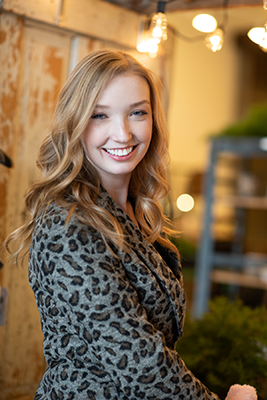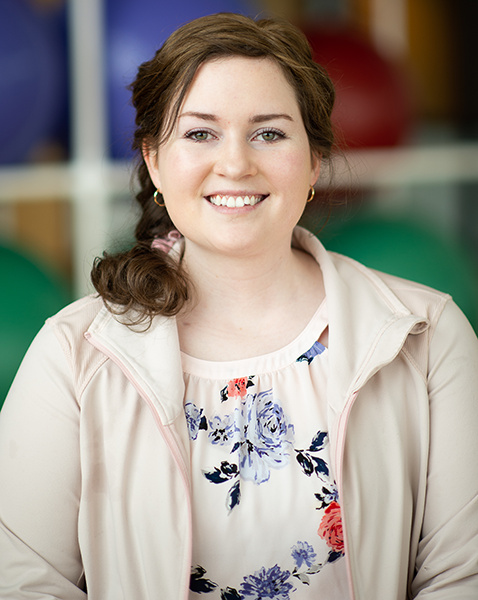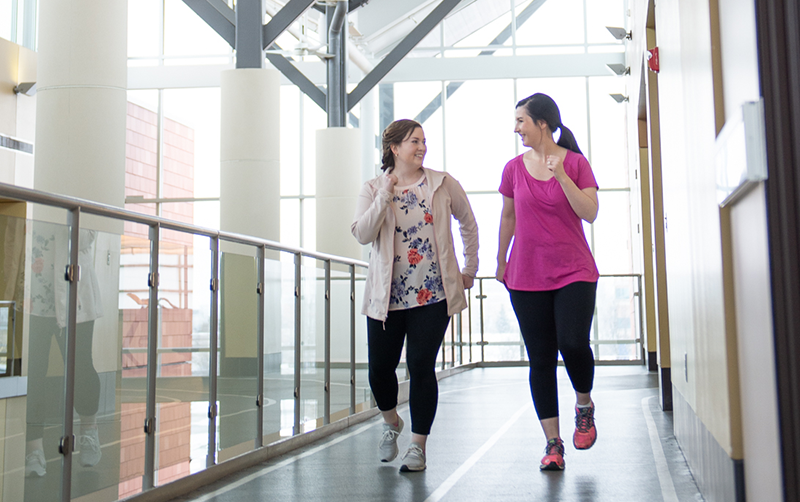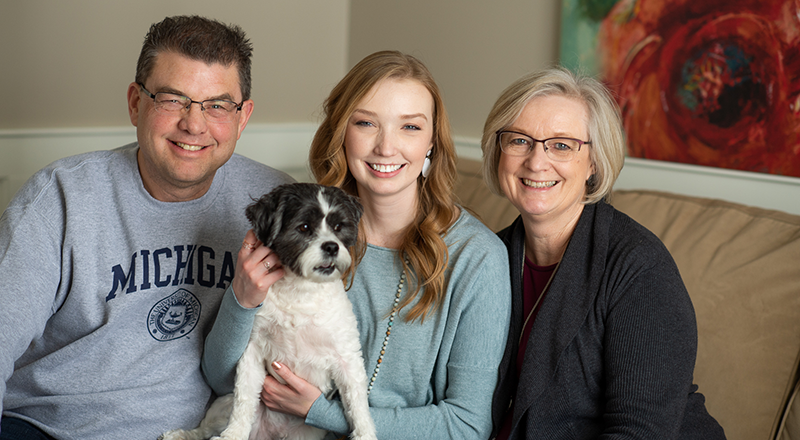Survivors and support

photo credit: Edda Pacifico
Young adult leukemia survivors maintain a long-term, supportive friendship
Meet Megan Heeringa, 24, a recent graduate with a master’s degree in speech pathology, who now works with senior citizens in Grand Rapids. She has a flair for fashion, enjoys macrame and has a special love for her dog, Denver.
Now meet Natalie Cameron, also 24, a recent graduate with a degree in exercise science from Liberty University in Virginia, who recently moved back home to Oxford, Michigan, to find a job. She has a baby nephew she adores, an interest in fitness and a special aspiration to help people get back their strength after serious illness.
In addition to being active young women in the early stages of adulthood, Heeringa and Cameron have much more in common: as survivors of acute myelogenous leukemia and bone marrow transplant recipients, they live with chronic graft-vs.-host disease as a result of their transplants. They became friends after both being diagnosed their senior year of high school and are a source of support for each other ever since their parents met at the University of Michigan Rogel Cancer Center.
High school life interrupted
Heeringa was midway through senior year of high school in Grand Rapids and her extreme fatigue seemed justified. She danced competitively on two teams, played violin in the high school orchestra, tutored and nannied on the side, and all while taking advanced classes to prepare for college.
But she began noticing large bruises. She and her mom looked up the symptoms of anemia. It wasn’t until a shooting pain beneath her ribs that her parents took her to the emergency room. She was diagnosed with leukemia on Jan. 3, 2013.
"One minute I was trying to decide which college I would be attending in the upcoming fall. The next, we were talking about chemo, bone marrow transplants, losing my hair and living in the hospital for the unforeseeable future," Heeringa says.
Another girl with AML

photo credit: Edda Pacifico
Cameron’s diagnosis came that spring, a month away from her 18th birthday. Always an athlete, she had switched from gymnastics to figure skating. She took a vacation to Arizona and hiked in the mountains. Eager to finish high school, she already knew she wanted to get her degree in exercise science.
"I’ve always been interested in working with athletes," she says. "But I also love the idea of doing in-home training for people who are recovering from illness or unable to leave their homes."
After her AML diagnosis, Cameron spent both her 18th and 19th birthdays in the hospital. She received her high school diploma from a hospital bed.
During recovery from her transplant, she remembers learning there was another girl -- exactly her age -- on the floor. Their parents had met, but because of strict precautions to prevent infection, Cameron and Heeringa didn’t really get to know each other until later.
"Megan got discharged a little before me," Cameron says. "She and her mom came to visit and brought me a little Easter basket. It was strange to have two young girls with AML. It’s usually found in men who are older."
Rebuilding health as young adult survivors
Both young women had long roads to becoming cancer free that included chemotherapy, radiation, relapses and bone marrow transplants. Pediatric bone marrow transplant patients usually stay in the hospital for four to six weeks after the procedure.
"BMT patients are hugely dependent on caregivers while in the hospital. As the body is recovering, we worry about three major complications after transplant: Graft-vs.-host disease (GVHD), infection and relapse,” explains Sung Choi, M.D., a pediatric oncologist at the Rogel Cancer Center.

photo credit: Edda Pacifico
Graft-vs.-host disease is an important research and clinical problem that Choi and her team have been interested in. GVHD happens when the transplanted bone marrow cells see the patient’s cells and attack them. GVHD affects each patient differently, but can cause high blood sugar, high blood pressure, hormonal issues, bone and joint problems, skin problems and more.
Both Heeringa and Cameron developed chronic GVHD, though some of their symptoms are different. Heeringa has issues with skin rashes and muscular problems requiring occupational therapy.
Cameron’s GVHD attacked muscles, resulting in scar tissue. She experienced permanent hair loss. Though the connection is unclear, she required a hip replacement.
"Going from a place of being very strong to a place of being physically weak is very difficult," Cameron says. "I was just getting back into shape when my chronic GVHD set in. It’s very frustrating."
The importance of support systems
Bone marrow transplant patients require much support from caregivers, Choi says, and many spend months in the hospital.
She was involved in the creation of BMT Roadmap, a tablet-based educational tool for BMT patients and caregivers while in the hospital. She also conducts research on why it’s important for caregivers of BMT patients to remain healthy, including ways for them to care for themselves.
"Dr. Choi is an expert in dealing with young adults and GVHD. She also genuinely cares about her patients as whole people. I think the app she created is genius and will help so many going through the transplant process,” Heeringa says.

photo credit: Edda Pacifico
Both young women have found support groups helpful. In Grand Rapids, Heeringa is involved with the AYA Movement of West Michigan, a group for young adult survivors of life-threatening illnesses. Cameron attended and spoke at the GVHD Summit in Chicago last fall. Hearing from others -- young and old -- living with GVHD was inspiring, she says.
Having each other for support has also been instrumental in moving forward as young adult cancer survivors with chronic GVHD. “Our timeline from treatment was so similar. We were frequently in the clinic on the same days and facing similar challenges regarding returning to school with busy appointment schedules, trying to get back into fitness and facing significant effects of GVHD,” Heeringa says.
They now try to coordinate appointments to catch up and have lunch afterwards.
“When we do get together, we’ll joke and laugh about the tests we’ve gone through on that day,” Cameron adds. “We compare notes and what the other is experiencing. We motivate each other and see that we don’t have to stop our lives because of GVHD.”
Choi says most of the patients she sees in clinic are cancer survivors and years out from their transplants.
“They have survived their cancer and are reintegrating into daily life. Our therapies and antibiotics have gotten better; much of the challenge is learning to manage other medical issues and readjusting their lives,” Choi says.
Continue learning about support for bone cancer transplant patients
Michigan Medicine resources for bone marrow transplant patients
Resources at the Leukemia & Lymphoma Society
Watch our video about a patient with AML who regained his strength after bone marrow transplant:
